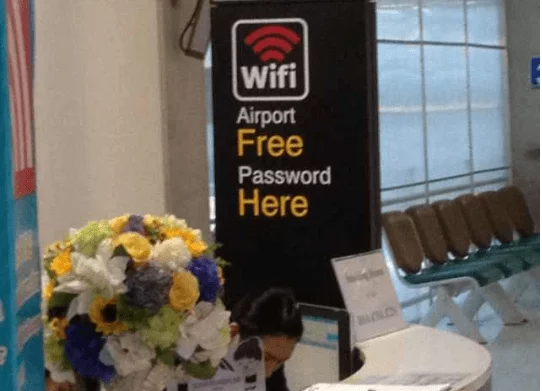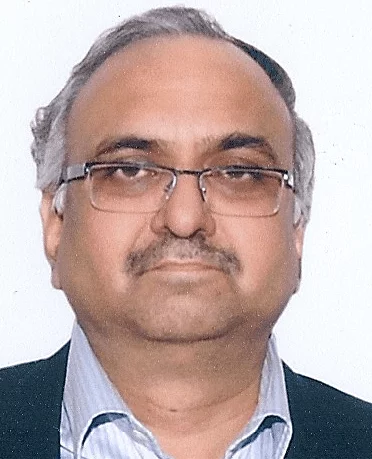 Public Wi-Fi is becoming as ubiquitous as lighting, heating and air conditioning in public spaces; today, it’s only the absence of such amenities that would be worth remarking upon. Globally, more than half of the world’s Internet users access the Web through mobile devices – that’s more than 1.5 billion people – a figure reflected in the rising sales of mobile devices.
Public Wi-Fi is becoming as ubiquitous as lighting, heating and air conditioning in public spaces; today, it’s only the absence of such amenities that would be worth remarking upon. Globally, more than half of the world’s Internet users access the Web through mobile devices – that’s more than 1.5 billion people – a figure reflected in the rising sales of mobile devices.
In India, this represents 86 million of the country’s 160 million Internet users accessing the Internet via their mobile devices1, and it is India’s millennial generation leading this trend. The figures speak for themselves; according to research from Cisco, India actually ranks ahead of the rest of the world when it comes to Generation Y’s adoption of technology and smart devices; 70 per cent of Indians from this demographic compulsively check their smartphones for updates, as compared to a global average of 60 percent. According to the same survey, of those compulsive mobile checkers, 42 percent said they would feel anxious if they couldn't consult their smartphones and 71 per cent wished they didn’t feel so compelled, but they like to stay connected. Globally, 9 out of 10 respondents to the same survey mentioned that they get dressed, brush their teeth, and check their smartphones as part of their morning ritual; in India, the number is 96 percent.
For India’s millennials, mobile devices have become the number one information source for receiving (and sharing) everything from current affairs to celebrity gossip, and public spaces have become fundamental to this trend. A recent study by iPass suggests that there will be 47.7 million public hotspots worldwide by the end of 2014 and that over the next four years this number is set to reach 340 million; that’s the equivalent of one Wi-Fi hotspot for every 20 people on earth!
Also read : Tata Teleservices Bets on WiFi Hotspots to Tap Data Drive
Today in India, there are approximately 29,000 Wi-Fi hotspots at commercial locations across the country; of these, around 4,000 are located at retail outlets; 13,000 at cafes and 12,000 at hotels, but the volumes are increasing on a daily basis. Visitors to shopping centers, railway stations, sports stadiums and other public spaces consider Wi-Fi access in the same way as air-conditioning or lighting; simply a given, and airline passengers are no exception. According to airport technology providers SITA, 97 percent of air travelers carry a phone, laptop or tablet with 18 per cent of them travelling with all three; a trend which has encouraged airports across the globe to invest, collectively, nearly $7bn in the coming year to improve their IT infrastructure.
The Wi-Fi ‘Magic Hour.’
The particular environment of airports has also helped to create a very distinct pattern of behavior and consumption of Wi-Fi. First identified within the retail sector, the airport ‘Magic Hour’ reflects the time – typically, ‘Air Side’ – that passengers spend waiting to board their flights. The retail sector considers this time period ‘magic’ since passengers are effectively a captive audience primed to browse shops and make purchases; per square meter, and per time available. Air-side shopping, conducted during this ‘magic hour’ has helped to establish airports as some of the most prime retail real estate locations on earth. In fact, such behavior has become a ‘default’ for many travelers who actually reserve this time specifically to make purchases, whether souvenirs or gifts or business equipment or reading material.
Airport Wi-Fi-users have also created their own version of the ‘magic hour’, when travelling, as they use this time to check emails, access flight information, browse the web and send messages prior to boarding their flight. Logging on has become a reflex in the same way as stocking up on reading matter or bottled water prior to a flight; and provision of free, secure Wi-Fi as much a part of the expected airport experience as air conditioning or cafes.
Increasing infrastructure demands
The infrastructural implications of this rising trend are considerable; in terms of adoption of mobile platforms, in particular, we are witnessing a form of ‘Half Life’ – the time required for a platform or application to become mainstream is half that of its predecessor. We saw this with platforms such as Facebook and Twitter on mobile, now with Instagram and chat applications; the time period during which these applications are becoming ‘critical’ to their users is decreasing at an exponential rate.
The above trend means that, not only are the volumes of data increasing but the type of content being shared and quality of service expectations are also rising at the same rate; thereby, creating considerable infrastructure implications for the same. Airports represent a particularly demanding environment in terms of public Wi-Fi provisioning, maintenance and scalability in addition to quality and reliability; time is limited, messages and information is typically time-sensitive and passengers’ tolerance levels are notoriously strained.
Also read: Public Wi–Fi hotspots in India

Airports are at the heart of a wider behavior shift where constant connectivity is considered a ‘default’; India’s Generation Y represent the nation’s ‘exhibitionist’ class whose need to share, endorse and validate in real-time has become embedded. To them, and successive generations, public Wi-Fi will be considered a sine qua non, and with every new application and platform their demands and expectations in terms of service quality are set to increase.
Today, one in 20 Indians travel by air, a number which is expected to increase five-fold by 2032. There are currently over a 100 public Wi-Fi hotspots in India’s airports4, each experiencing their own ‘magic hour’ and exponentially growing user demands and expectations. These are a reflection of a wider trend in India where real-time communication – and supporting infrastructure – will be a given; whether you are taking a coffee or – indeed – about to board a plane.
This article was contributed by Mr. Sunil Tandon, Head NonVoice Services, Tata Teleservices Ltd.















